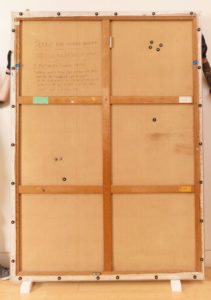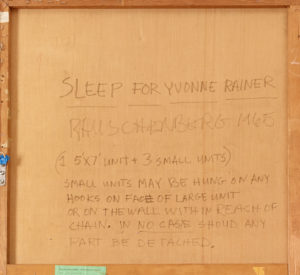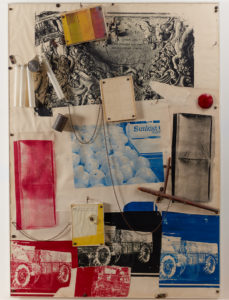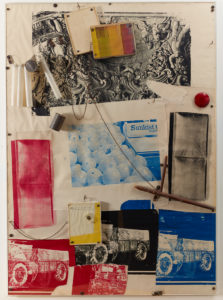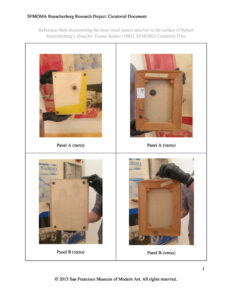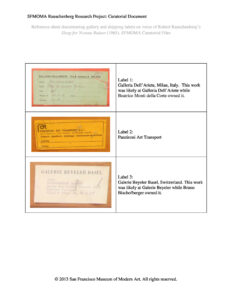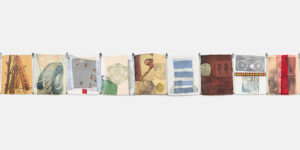Ownership History
Phillip Johnson, purchased through Leo Castelli Gallery, New York, March 1966
Ralph Schoenman, purchased through Leo Castelli Gallery, New York, November 1973; sold Sotheby’s London, April 1974
Offered by Sotheby’s, New York, November 1978; bought in
Bruno Bischofberger sometime between 1974 and 1980
Beatrice Monti della Corte sometime between 1974 and 1980
Monti della Corte placed on consignment with Leo Castelli Gallery, New York, December 1980
Mr. and Mrs. Paul Anka, purchased through Paula Cooper Gallery, San Francisco, March 1982
Private collection, purchased 2000
Exhibition History
Art Across America, M. Knoedler & Co., Inc., September 16–October 1, 1965. Traveled to: Toledo Museum of Art, OH, October 1965; Cleveland Institute of Art, November 1965; Memorial Art Gallery, University of Rochester, NY, December 3, 1965–January 2, 1966; Wadsworth Atheneum, Hartford, CT, January 15–February 15, 1966; Contemporary Arts Center, Cincinnati, March 1–22, 1966; Flint Institute of Arts, Flint, MI, April 1966; Brooks Memorial Art Gallery, Memphis, May 1–22, 1966; Pepsi-Cola Exhibition Gallery, New York, June 1966; J.B. Speed Art Museum, Louisville, September 1966; Contemporary Arts Museum, Houston, October 4–22, 1966; Philbrook Art Center, Tulsa, November 1966; Joslyn Art Museum, Omaha, December 1966; Isaac Delgado Museum of Art, New Orleans, January 1967; Commercial Museum, Philadelphia, February–March 1967; Henry Art Gallery, March 26–April 16, 1967; Portland State College, OR, April–May 1967; La Jolla Museum of Art, CA, June–July 1967; Tucson Art Center, July 16–August 13, 1967. *Inclusion in all venues has not been confirmed.
Eleven Paintings and Two Sculptures from the Sixties, Kornblatt Gallery, Washington, D.C., November 7–December 10, 1981.
In addition to appearing in the special exhibitions listed above, Sleep for Yvonne Rainer was shown in SFMOMA’s galleries in 2016 as part of Pop, Minimal, and Figurative Art: The Fisher Collection, a rotating presentation of the Doris and Donald Fisher Collection at SFMOMA.
This listing has been updated since the launch of the Rauschenberg Research Project and is complete as of August 31, 2016.
Publication History
Peter Selz, Art Across America (Dayton, Ohio: The Mead Corporation, 1965), n.p. (ill.).
Nan Rosenthal, “Art Across America,” Art in America 53, no. 5 (October–November 1965): 108 (ill.).
“Contemporary Featured at Art Center,” Tucson Daily Citizen, July 15, 1967 (ill.).
Eleven Paintings and Two Sculptures from the Sixties (Washington, D.C.: Kornblatt Gallery, 1981), n.p. (ill.).
Jo Ann Lewis, “Strokes of ’60s Nostalgia,” Washington Post, November 7, 1981.
Susan Davidson and David White, eds., Rauschenberg (Ferrara, Italy: Ferrara Arte, 2004), 46n32.
Susan Davidson, “Robert Rauschenberg,” Guggenheim Bilbao Museum Collection (Bilbao: Guggenheim Bilbao, 2009), 96n27.
This listing has been updated since the launch of the Rauschenberg Research Project and is complete as of August 31, 2016.
